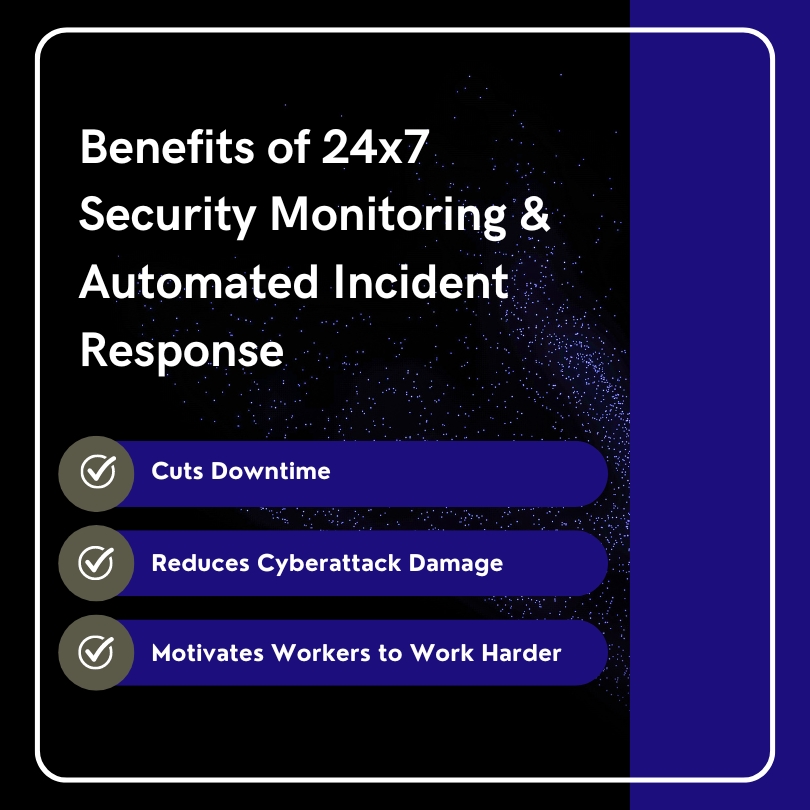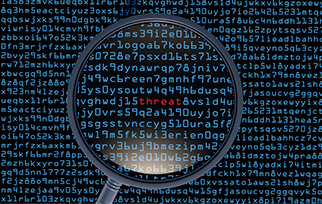Do we need to emphasize the need for security monitoring and automated incident response in this interconnected world where data is everything? We shop, entertain, study, transact, and do a lot online, generating millions of data.
Keeping those data is the responsibility of the organizations with whom we share. Here, the role of the security operations center (SOC) becomes vital. However, a SOC that can monitor a network around the clock requires a lot of resources to design, construct, and run.
Most organizations need more resources and expertise to tackle this. According to experience and current industry trends, cybersecurity companies are the way to go for this kind of work.
These security service providers, such as Cybalt, incorporate best practices based on lessons learned from their clients and the wider cybersecurity threat landscape. Let's learn more about automated incident response and 24/7 security monitoring
Why is Continuous Monitoring Vital for Cybersecurity?
The importance of continuous cybersecurity threat monitoring includes the ability to see your IT security data in real-time and the following:
- The process of finding security holes and fixing them
- Being vigilant in the face of cybercrime, phishing, and other threats requires high-risk management.
- Enhancing incident response through the prompt detection and mitigation of possible dangers
- Giving businesses cybersecurity metrics that can evaluate their security posture across the board
- Preventing threats from outside sources by keeping tabs on vendor risk management security procedures
- Keeping an eye on how well every security measure is working
- Finding new dangers and patterns with the help of threat intelligence
The Role of Automated Incident Response in Cyber Defence
Rapid Identification and Evaluation
Automating the process of identifying and assessing possible dangers speeds up the first phases of incident response. Automated systems can detect patterns, outliers, and signs of compromise in real-timeusing sophisticated analytics and machine learning algorithms.
Triage for Automated Incidents
Automated incident categorization and prioritization based on predefined criteria allow for rapid triage after detection. In this way, we can avoid needless delays in response while still dealing with the most pressing threats.
Effective Elimination and Control
Automation is crucial for carrying out predefined response actions to contain and eliminate threats quickly. Isolating infected systems, stopping harmful processes, and initiating remediation measures are all possible outcomes of automated responses.

-
Cuts Downtime
Cybersecurity monitoring services can greatly reduce your company's downtime, which is one of their primary benefits. Your managed security services provider will test your network often to ensure it's running well, which is critical for your company's day-to-day operations.
-
Reduces Cyberattack Damage
Cyberattacks can compromise sensitive data and ruin any company. Many cyberattacks aim to compromise the operating system and steal sensitive data by breaking into the network.
MSP specializing incybersecurity monitoringcan help you mitigate the effects of cyber assaults. -
Motivates Workers to Work Harder
Cybersecurity monitoring services have many advantages, including helping boost employee productivity. A managed security service provider handles all network technicalities, freeing staff to focus on their strengths. IT service providers improve network performance to help workers work faster.
Real-Time Threat Detection and Response
Real-time threat protection is a security suite, not a standalone program. This is because it takes all the necessary steps to ensure the security of your computer and network when you connect them to another network.
Complicating matters further is that various industries have their own set of rules, regulations, and frequently specialized tools to guarantee the security of their systems. For example, the healthcare sector has its rules regarding real-time threat detection. The banking sector feels the same way. Energy companies have their own set of regulations regarding Cybersecurity.
Challenges and Pitfalls of Manual Incident Response
Inadequate Incident Prioritisation
Prioritization is vital because it establishes each incident's seriousness and effect. By doing so, you can direct resources efficiently and resolve incidents promptly. Critical incidents can be downplayed if incident prioritization is not in place or is handled poorly.
One way to tackle this problem is to create a system that ranks incidents according to their severity, urgency, and impact. Teach your first responders to conduct comprehensive incident assessments.
Alarming and Escalating Problem
You risk missing important incidents due to ill-defined alerting criteria and ineffective escalation procedures. Furthermore, your company can devolve into a game of "Who's responsible for resolving this incident?" due to ineffective escalation.
Nobody wants a situation with no one to answer to because of this. How about the solution? Work together as a team to rethink what alerts and escalation pathways should be based on.
Specify who needs to know at each step of an incident. Leverage a system that notifies users through multiple channels, including SMS, Slack, Teams, WhatsApp, and Telegram.
Too Little Information Regarding Incidents
Think of it as attempting to finish a jigsaw puzzle while some pieces are missing. If you are missing critical information, follow the exact procedure.
When the description is vague, stakeholders need help understanding what happened and how to fix an issue. Your solution to this problem can be to establish transparent criteria for recording incidents along with all the relevant information, such as the event's cause, impact, and resolution.
Have your team members add helpful notes to help the next person deal with the incident. Please use automation to send concise incident messages, assign alerts to the appropriate team members, and grade their importance and impact.
Absence of Automation
Excessive reliance on manual incident management leads to inefficient workflows, increased human error, and a significant challenge when it comes to scaling.
One way to address this is to provide your team with information regarding the benefits of incident management automation. Then, thoroughly examine your incident management system to find places where automation might be useful.
Leveraging Automation for Faster Incident Resolution
A wide variety of scenarios and uses can benefit from automated incident response by cybersecurity companies. Displayed here are a handful:
Accurately Reducing Anomalies
By comparing it to the standard, the system quickly finds and isolates strange behavior, like an unexpected spike in data access or transfers. Prompt action thwarts threats, reducing the likelihood of data breaches or insider threats.
Neutralizing Specific Threats
The system is always looking for new dangers to stop cybercriminals in their tracks proactively. Improper network communications are just one example of swiftly responding to suspicious patterns, halting harmful processes, and protecting compromised data points from potential harm.
A Defence System That Works in Any Setting
The system ensures that when something happens in one part of the company, a coordinated response happens in other parts of the organization by smoothly connecting on-premises and cloud infrastructures.
It keeps all platforms running smoothly while automatically enforcing security protocols, effectively containing and mitigating the incident.
Best Practices for Implementing 24x7 Security Monitoring & Automated Incident Response
Give Automation a Top Priority
Find out which security incidents happen most frequently and which take the most time to investigate and fix. After that, depending on the organization's objectives, develop a list of use cases and ways security automation can be helpful.
Begin by Creating a Detailed Strategy
Create manual playbooks detailing current procedures, standards, and best practices for handling incidents to get your teams started on the right foot.
No matter what happens, teams should always adhere to a consistent and repeatable procedure. The next step is to create your initial automated playbooks by identifying the most labor-intensive and repetitive tasks.
Oversee the Lifecycle of Incidents
There are five stages to a cybersecurity lifecycle: discovery, safeguarding, detection, reaction, and recovery.
An effective incident response management program must automate and coordinate detection, communication, damage control, and lessons learned following an incident. The cybersecurity firms will provide the proper monitoring.
Have Clear and Comprehensive Procedures
Security teams can remain composed and take appropriate action during an attack with the support of robust incident response management.
Within a well-structured incident response management process, crisis response steps are must.
Case Studies on Cybersecurity Monitoring by CybaltOne of the leading banks was facing challenges such as a lack of threat visibility, immature cybersecurity processes, ineffective configuration management, and a shortage of cybersecurity skillsets. Cybalt's solution involved comprehensive risk assessment, studying the bank's IT infrastructure, conducting deep dive pen testing, and implementing industry-standard frameworks like the MITRE attack framework.
The solution provided 24x7 security monitoring, improved detection and response capabilities, streamlined policies and procedures, and efficient incident management.
Cybalt cybersecurity monitoring services used specialized skillsets and processes to meet SLAs and stay ahead of threats. Awareness sessions and continuous blue teaming and red teaming exercises strengthened the bank's defense.
The benefits included enhanced visibility, effective incident management, and a long-term roadmap to increase security posture, ultimately helping the bank achieve the required security maturity level.
Conclusion
Cybersecurity monitoring is crucial in today's intricate digital landscape, where vulnerabilities can affect any device, user, software, or application. Manual solutions must be cut due to data volume, complexity, new attack patterns, constant monitoring, and a lack of resources and expertise.
Contact Cybalt for cybersecurity threat monitoring to secure your data and businesses.
Other Blogs

From Nuclear Centrifuges To Machine Shops: Securing IoT
IoT or ‘the internet of things’ has been around for a lot longer than the buzzword
Read More


Demystifying XDR
As the capabilities of threat actors have increased so have the tools which we utilize to detect and respond to their activities.
Read More


Cybersecurity In A Post Pandemic World
As many cyber security practitioners will tell you, the most imminent and dangerous threat to any network are the employees accessing it.
Read More


